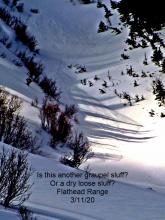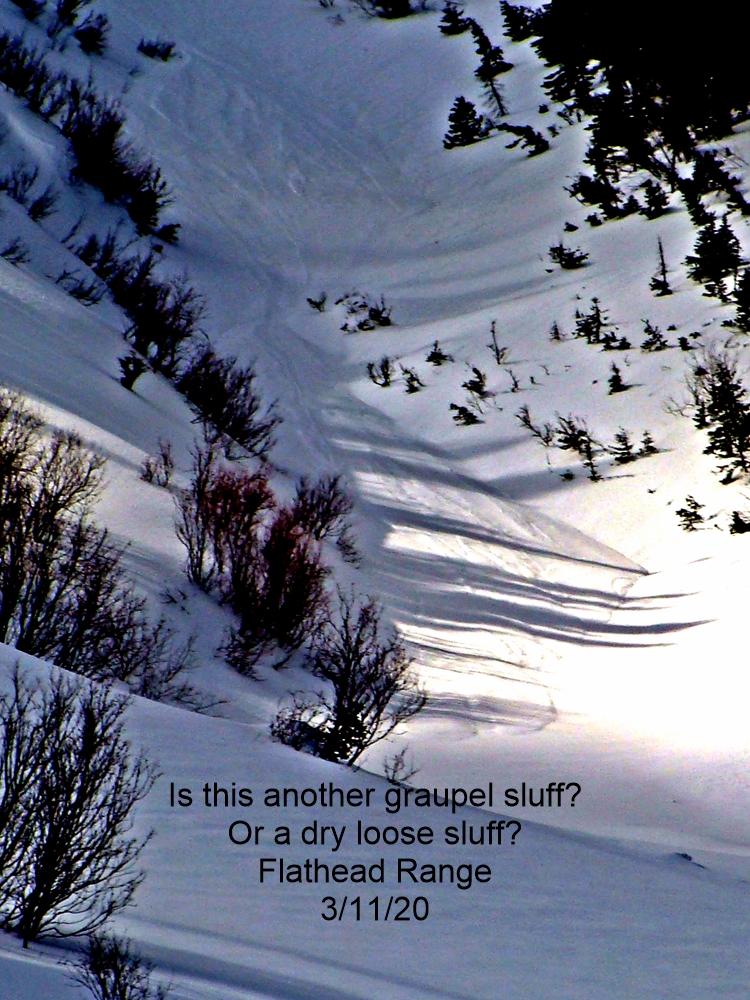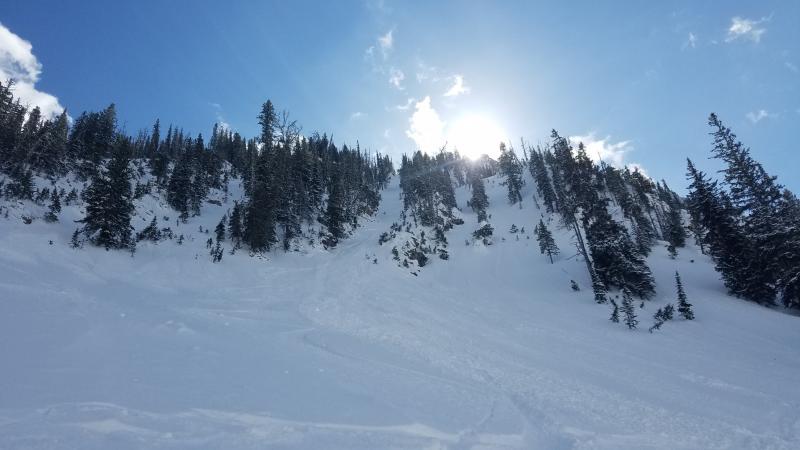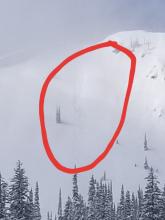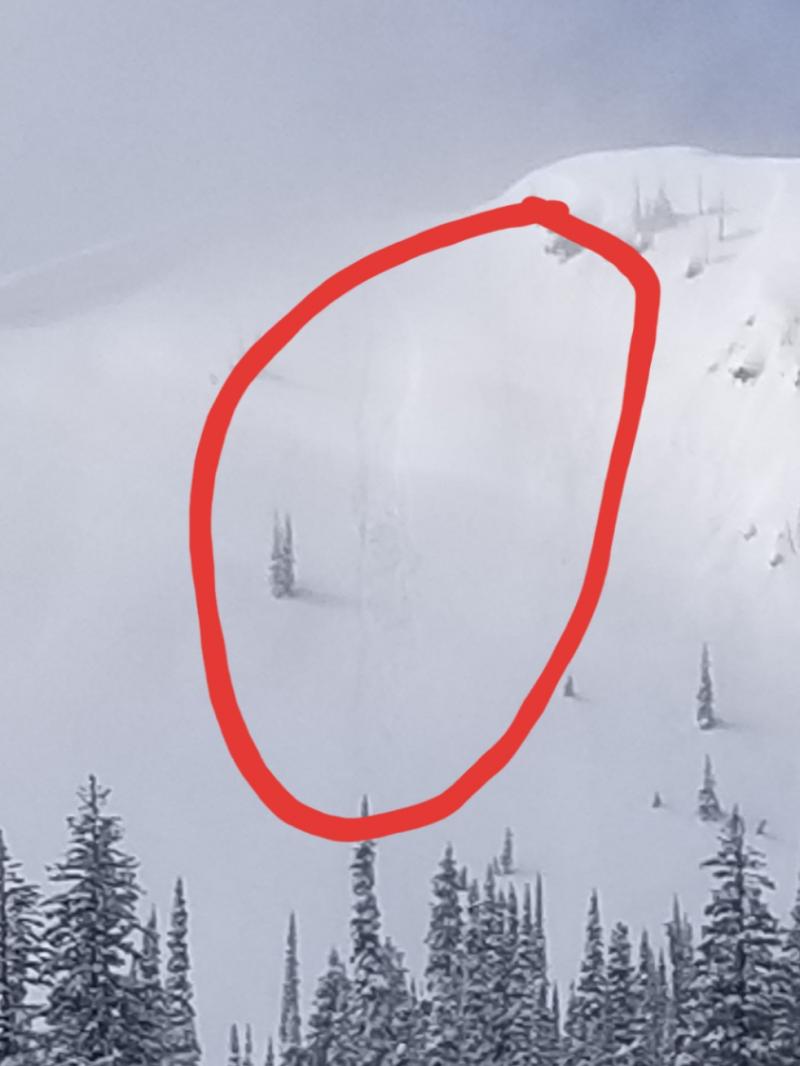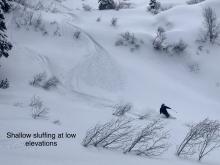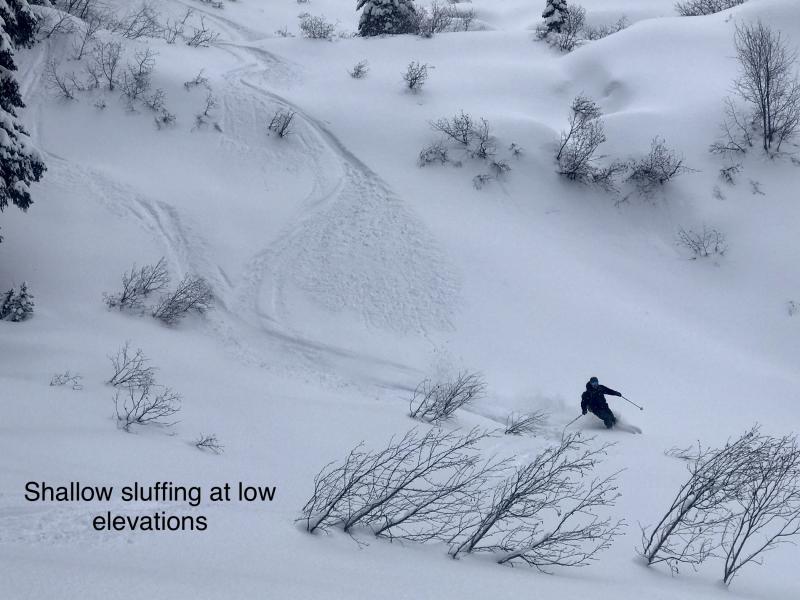| Thursday | Thursday Night | Friday | |
|---|---|---|---|
| Cloud Cover: | Mostly cloudy, light snow showers. | Mostly cloudy, Lingering snow showers. | Mostly cloudy. |
| Temperatures: | 23-30 deg. F. | 13-21 deg. F. | 24-33 deg. F. |
| Wind Direction: | west | west | west - southwest |
| Wind Speed: | 5-7 | 6-7 | 6-9 gusts 21 |
| Snowfall: | 0-1 in. | 0 in. | 0 in. |
| Snow Line: |
Swan Range
How to read the forecast
In most locations several layers of weak, faceted snow exist in the mid-snow pack with depth hoar near the ground. Though our snow pack is strengthening it remains possible to trigger an avalanche where this poor structure is found. The avalanche danger is MODERATE above 5000 feet. Dig into the snow to look for these weak layers. Where you find them avoid the likely trigger points like steep, rocky terrain and convex slopes in areas with relatively shallow snow.

2. Moderate
?
Above 6500 ft.
2. Moderate
?
5000-6500 ft.
1. Low
?
3500-5000 ft.
- 1. Low
- 2. Moderate
- 3. Considerable
- 4. High
- 5. Extreme
-
Type ?
-
Aspect/Elevation ?
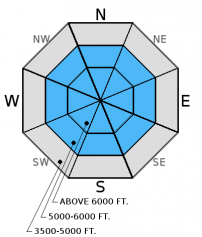
-
Likelihood ?CertainVery LikelyLikelyPossible
 Unlikely
Unlikely -
Size ?HistoricVery LargeLargeSmall

Multiple buried weak layers exist in most locations across the advisory area. These include several layers of weak, faceted snow formed during a series of cold, dry periods, depth hoar near the ground, and in isolated areas shallowly buried surface hoar. It is possible for one or more of these layers to fail given the added weight of a sled or skier. Avoid steep, rocky terrain that often harbors a shallower snowpack. Here you are more likely to trigger one of these persistent weak layers. We have observed very few persistent slab avalanches this season, but do not become complacent about this hazard. Take a little extra time to dig into the snowpack and look for layers of weak snow in areas where you are recreating.
-
Type ?
-
Aspect/Elevation ?
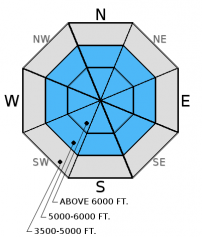
-
Likelihood ?CertainVery LikelyLikelyPossible
 Unlikely
Unlikely -
Size ?HistoricVery LargeLargeSmall

Up to 8 inches of recent snow fell on top of a great sliding surface that is the Jan. 19 crust. Pay attention to small, loose, snow avalanches on steep terrain today. Loose snow sliding on smooth crust can pick up a good head of steam and be particularly consequential if traveling near terrain traps like cliffs, trees, and narrow gullies. If we see prolonged periods of sun expect small loose, wet slides on the sunny slopes. Keep in mind that even small avalanches put rapid stress on the snow pack and have the potential to trigger deeper instabilities resulting in more destructive slides.
Wednesday: A party of snow bikers was in the Lost Johnny drainage in the Swan Range and found 8 inches of snow on top of the Jan. 19 crust. They noted multiple small, loose snow avalanches sliding on that crust. They also noted thin, slabs that were reported as running fairly long. Skiers on Elk Mountain in southern Glacier National Park reported areas where 5-10 cm of recent snow easily sluffed on the Jan 19 crust. They also noted poor snow pack structure with several layers of weak (faceted) snow and depth hoar at the ground. In one of their Extended Column Tests the column failed on the depth hoar while isolating it.
Tuesday: Adam and Todd were on Elk Mountain in southern Glacier National Park and found the breakable Jan. 19 crust buried by only 2-3 cm of snow. Snow coverage was thin and sparse at upper elevations. In wind loaded areas the snow surface was very firm and supportable with poor structure below. They noted well developed depth hoar at the ground and a layer of weak facets 20 cm from the surface. A party of skiers toured Tunnel Creek to Mt. Liebig in the Flathead Range and found 2 inches of snow above the Jan. 19 crust below 6000 feet. Above 6000 feet conditions improved with additional snow on top of the supportable crust. They did not observe any recent avalanche activity or wind loading.
Monday: Erich and Guy rode into China Basin and Werner Peak in the Whitefish Range. They found several weak layers near the surface that are not yet reactive that include surface hoar, the Jan. 19 melt-freeze crust, and a thin layer of facets about 16 inches from the surface as well. Weak, sugary snow also exists near the ground but fractures did not propagate across the column on any layer in stability tests. Skiers in Paola/Dickey Creek in the Flathead Range found about 6 inches of new snow above the Jan. 19 crust, and also found several weaknesses within the top 2 feet of the snow pack, but observed no fracture propagation in their stability tests. BNSF Avalanche Safety toured in John F. Stevens Canyon. They found multiple weak layers in their snow pits, however fractures did not propagate across the column on any layer in stability tests
See below for all observations this season.
Yesterday temperatures remained fairly cool, reaching the lower 20s. We picked up 0-1 inches of new snow in the northern part of the advisory area. The Swan Range was favored by lake effect snow and Noisy Basin SNOTEL recorded 4 inches. Currently, temperatures above 6000 feet range from 10-19º F, and winds are out of the west at 2-8 mph with gusts from 6-16 mph. Today, light showers should taper by mid-morning and temperature will remain in the low-mid 20s.
| 0600 temperature: | 10-19 deg. F. |
| Max. temperature in the last 24 hours: | 14-23 deg. F. |
| Average wind direction during the last 24 hours: | west-southwest |
| Average wind speed during the last 24 hours: | 5-10 mph |
| Maximum wind gust in the last 24 hours: | 9-21 mph |
| New snowfall in the last 24 hours: | 0-4 inches |
| Total snow depth: | 53-68 inches |
This advisory applies only to backcountry areas outside established ski area boundaries. This advisory describes general avalanche conditions and local variations always occur. This advisory expires at midnight on the posted day unless otherwise noted. The information in this advisory is provided by the USDA Forest Service who is solely responsible for its content.














